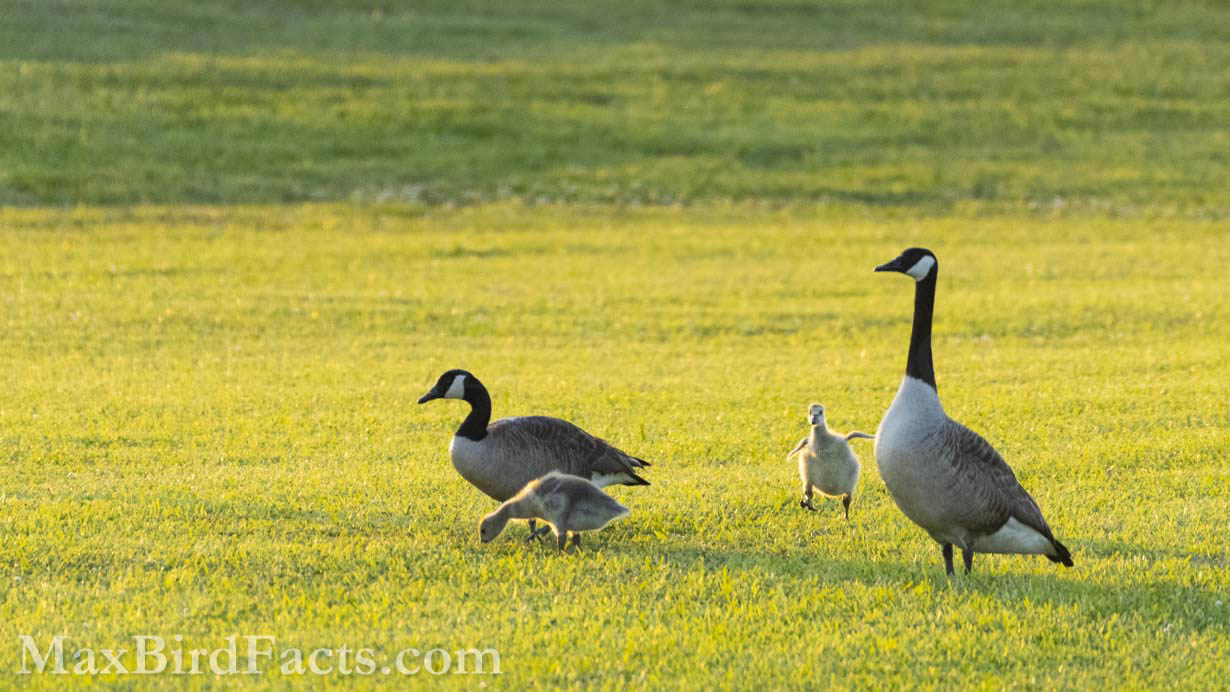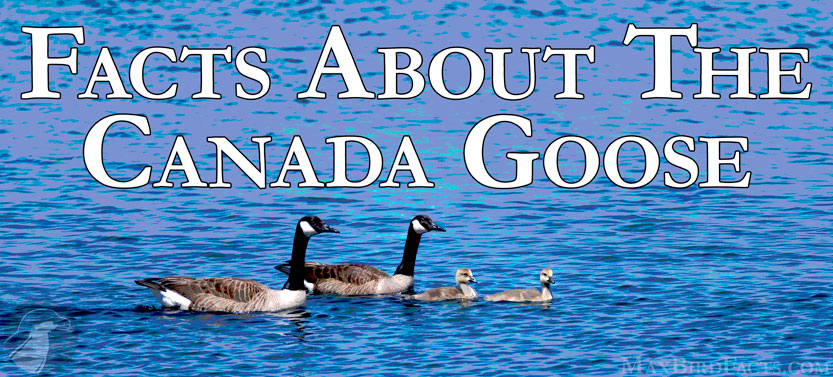The Canada Goose (Branta canadensis) might seem like the most common geese out there, but they have a surprisingly gripping story. In this article, I want to share some fun and fascinating facts about the Canada Goose.
So, without further adieu, let’s dive in!
1. The Canada Goose’s genus name, Branta, means “burnt goose.”
I always find it fascinating to learn what the scientific binomials for species translate to, and the Canada Goose is no exception.
The genus Branta originates from a Latinized version of the word Brandgás from Old Norse, meaning “burnt goose.” Obviously, canadensis is the Latin translation of Canada.
So, putting this together, the literal translation of the Canada Goose’s scientific name is “Canada’s burnt goose.”
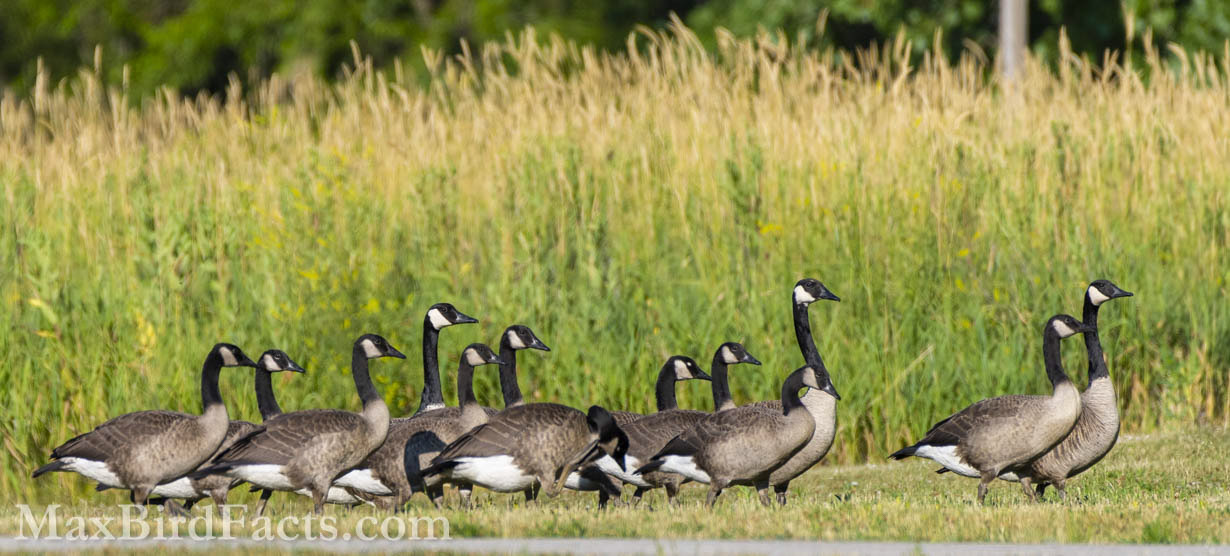
2. The Canada Goose’s population and range have exploded over the past 50 years.
In the early 1900s, hunting was very loosely regulated, especially for Canadian Geese. Thankfully, in 1918, the United States and Canada formed the Migratory Bird Treaty Act. This act protects all migratory birds in North America from unlawful hunting, capture, or other harm. The MBTA was extended to Mexico in 1936, Japan in 1972, and Russia in 1976.
One of the most important things this act does is allows criminal prosecution if someone is found to hunt fowl out of season or without proper permits or to harm or kill any migratory bird (songbirds, raptors, herons, gulls, etc.). Because of the protection the Canada Goose gained through the Migratory Bird Treaty Act, they fill the skies flying south in the fall and north in the spring.

3. The classic V formation Canada Geese fly during migration is to save energy.
Researchers have conducted countless studies to try and determine why birds, like the Canada Goose, migrate in a V-formation. This isn’t just strictly for geese; American White Pelicans, Sandhill Cranes, and Laughing Gulls all fly in V-formations during migration.
The V-formation is a massive energy-saving strategy that birds have probably been using since they first started migrating. The way it works is the lead bird, usually flying slightly below the followers, creates vortexes at its wingtips. Then, the birds behind the leader use this vortex for a slight boost with their lift.
The lead bird also takes some of the wind resistance for its followers, allowing them to save some energy. The leader will constantly change during the flight, so the flock shares the brunt of this effort.
The V-formation also allows for better communication between flock members. For example, if one goose sees a nice patch of open water to land and rest after a long flight, it can easily honk this information to its travel companions.
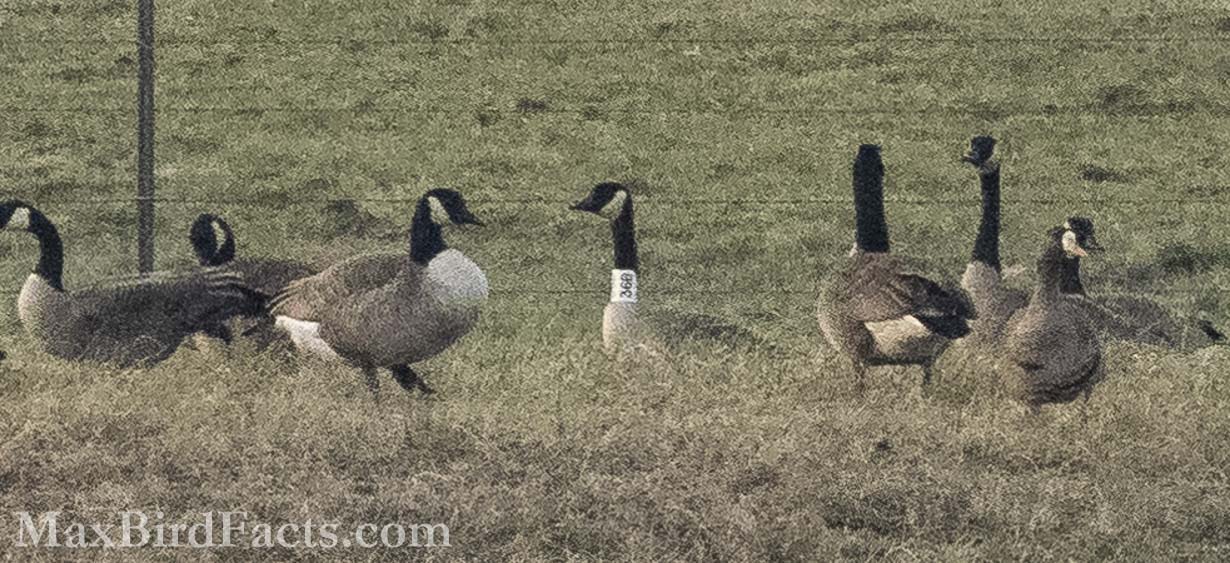
4. Because of their size, banded Canadian Geese receive a neck collar.
These neck collars are fantastic devices to quickly identify banded birds for reporting. Unlike the delicate, lightweight aluminum leg bands used on migratory songbirds, Canadian Geese can easily handle these collars.
These neck collars and markings are colored differently depending on where and who banded the goose. Thankfully, the collars are harmless to the goose, allowing it to go about daily life as if nothing has changed.
Reporting sightings of banded birds is hugely important to the researchers that banded them. So if you’ve seen a banded Canada Goose, please submit it.
You can do this by simply checking out my article Banded Bird Reporting and clicking or tapping on the image of the banded Canada Goose.
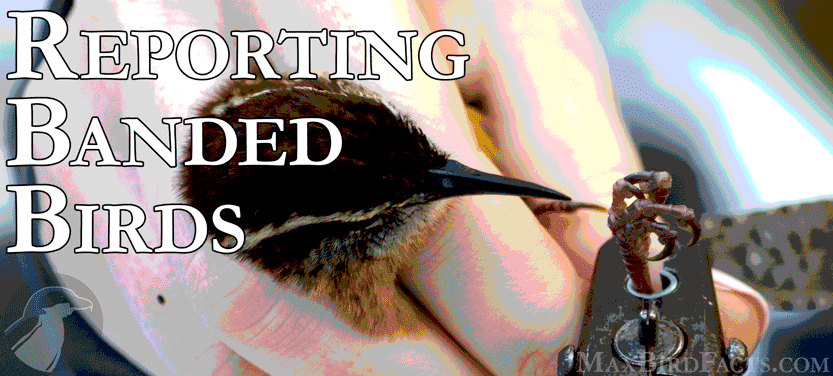
5. Baby Canada Geese are called Goslings.
The male Canada Goose is called a Gander, while the female is simply called a Goose.
A group of baby Canada Geese is called a Gaggle, but a migratory flock of Canada Geese can be called a Flock, Chevron, or Skein.
Goslings take a little over two months to grow out their feathers and learn to fly. However, they learn to swim the same day they hatch from their egg. Taking to the water is one of the safest places a young goose can retreat until they can take to the sky.
Thankfully, their parents are notoriously aggressive to anything that wanders too close to their chicks. A simple search on YouTube for “Canada Goose Attack” turns up dozens of hilarious videos of people fleeing in terror from a furious mother goose.
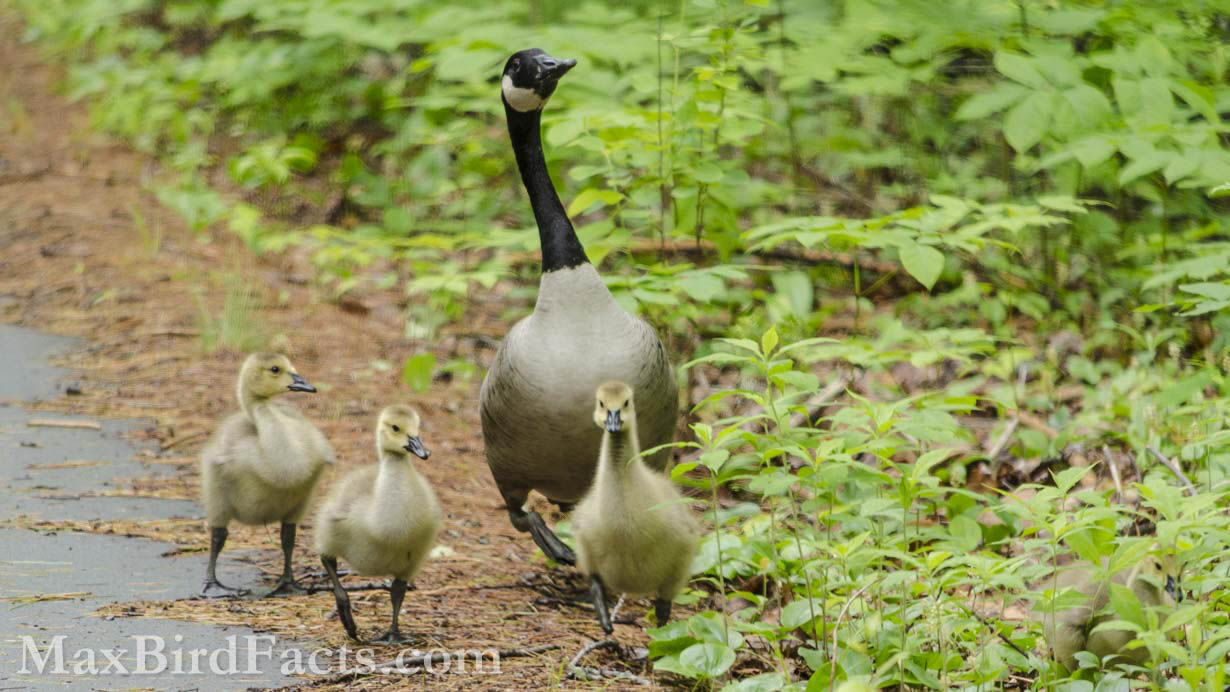
6. There are roughly 3.7 million Canada Geese in the wild today.
Thankfully, because of the success of the Migratory Bird Treaty Act of 1918, the Canada Goose is still the marker of fall that it has been for millennia in North America. Yet, the Canada Goose isn’t the only success story from the MBTA.
This treaty helped save the then-nearly-extinct Snowy Egret, Roseate Spoonbill, and countless songbirds killed for their feathers. Enacting laws to protect certain species entirely and very specific windows where others were allowed to be hunted saw an incredible rise in avian populations.
Today, if you are caught hunting outside of the correct season, you can face a year in jail, a $1,000 fine, and you will be ineligible for a hunting license for the next three years. If caught a second time, you could face up to ten years in jail.
Instead of a shotgun, I recommend you grab a pair of binoculars or a camera and observe these amazing avians unperturbed year-round.
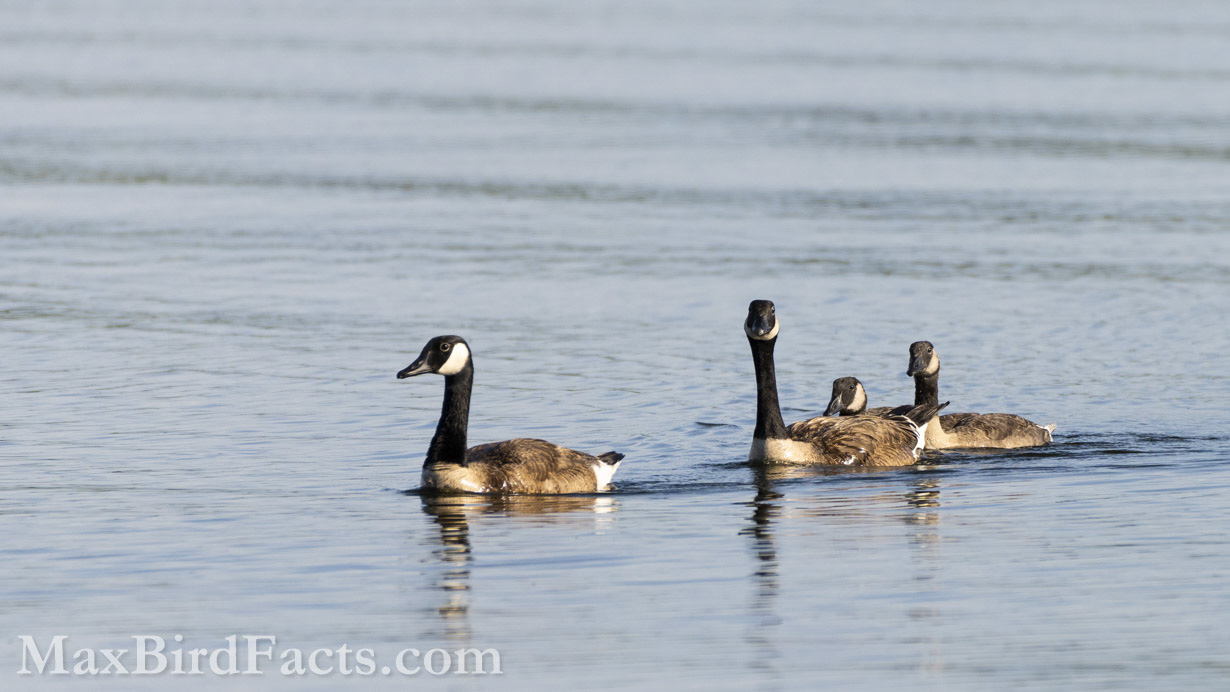
7. There are seven subspecies of the Canada Goose.
These are the Atlantic, Dusky, Giant, Interior, Lesser, Moffitt’s, and Vancouver Canada Geese.
The Atlantic Canada Goose (Branta canadensis canadensis) is the “original” subspecies. At the same time, most of the geese we have in cities, parks, and year-round residents in the continental US are from the Giant Canada Goose (Branta canadensis maxima) subspecies (more about this bird later).
The Canadian Goose subspecies seem to follow a trend: the further north you go, the smaller they become, and the further west you go, the darker their overall aspect.
The Giant Canada Goose (B. c. maxima) is the lightest and largest in the east, and the Dusky Canada Goose (Branta canadensis occidentalis) is the one of smallest and darkest in the west.
8. The Cackling Goose (Branta hutchinsii) was split from the Canada Goose in 2004.
Initially considered a smaller subspecies of the Canada Goose, the Cackling Goose earned the title of a new species relatively recently. After years of bickering, the American Ornithological Society deemed that the differences between the Cackling and Canada Goose were too significant to continue referring to it as a subspecies.
They are noticeably smaller than their Canadian cousins, averaging 3.6-foot wingspans and weighing 4.2 pounds. One of their most defining features is their small, short bill. The Cackling Goose’s bill and their “cackling” call are the best ways to differentiate them in a mixed flock with Canada Geese.
There are four subspecies of the Cackling Goose (Aleutian, Richardson’s, Small, and Taverner’s). This bird’s range is also notably smaller than the Canadian’s. Breeding in the Arctic Circle and spending the winter on the Texas and Mexican shores of the Gulf of Mexico, the Cackling Goose has a much more central path through North America.
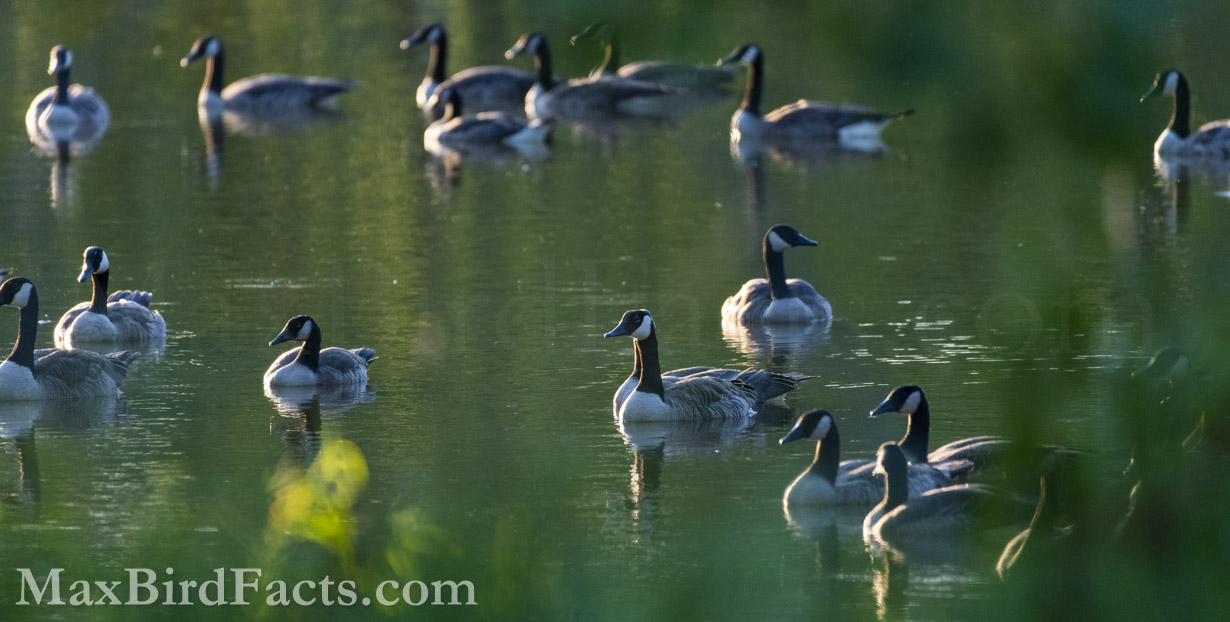
9. Canada Geese produce different calls and vocalizations by changing the length and shape of their neck.
The classic honking of the Canada Goose can easily change to a h-ronk and h-lenk by bending and curving the neck. The pitch and tone of their call can also change if the bird vocalizes while ducking its head toward the ground or up to the sky.
Geese get their iconic, raspy honking calls from the shape and length of their syrinx. A bird’s syrinx is equivalent to our larynx or voicebox. The Canada Goose’s syrinx is a simple tubular design that allows the bird to treat it similarly to a tuba.
Along with their typical honks, Canada Geese produce 13 unique vocalizations. These all serve different purposes depending on the occasion. One of their most notable is their noisy flight calls.
Canada Geese are quick to talk very loudly to each other while on the wing. This is usually my first indicator that a chevron of geese is somewhere above me. And low and behold, a flock of geese is flying between the clouds, heading back north for the spring.
10. The Canada Geese in the Southeastern United States probably aren’t migratory.
Because of the massive decline in the Canadian Goose’s population before the Migratory Bird Treaty Act of 1918, captive breeding programs were initiated. Specifically, the Giant Canada Goose (B. c. maxima) was hit hard during centuries of slaughter and near the brink of extinction. Thankfully, these breeding programs were massively successful, allowing geese populations to get a foothold back in the lower 48.
The Canada Geese we have here in Central Florida are most likely descendants of these original birds. There are, of course, migrants that enter the state every fall, but the birds that stay year-round are almost certainly of this Giant subspecies. These larger birds tend to migrate shorter distances than their cousins, the Atlantic Canada Goose (B. c. canadensis).

11. Spilled grain and corn are vital to the Canada Goose’s migration.
During the spring and summer, Canada Geese stay lean and healthy by grazing on grass and foliage. However, these birds gorge on grains during their migrations and winter holdovers.
Carbohydrates stored in cereal grains are a perfect way for migrating geese to refill their fat reserves. Agricultural spillage from harvests creates holdovers for geese to congregate and feast.
Corn, wheat, and other grains grown throughout the Central Flyway are perfect rest stops for hungry and tired geese. The starches in these foods can easily be turned into fat to fuel the bird onto the next leg of its adventure.
This is remarkably similar to Sandhill Crane’s diets during their migrations. If you’d like to learn more about this, check out my article What Do Sandhill Cranes Eat – Eating Bugs For Growth.
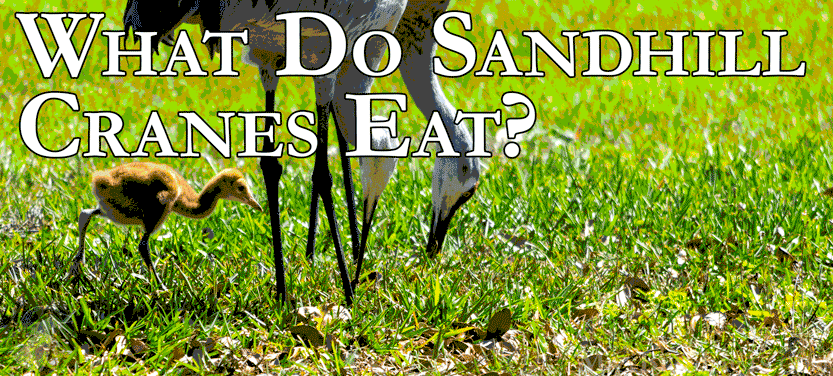
12. Canada Geese can fly up to 40 miles per hour.
This incredible speed matches their mindblowing flight range.
In a single day, a Canada Goose can travel 1,500 miles. This is equivalent to driving from Miami, FL, to Boston, MA, a 1,489-mile and 22-hour drive.
These distances are vital for birds to make it from their wintering grounds in the south to the nesting sites in the Arctic. The sooner a goose can get to the nesting grounds, the more successful it will be that season in securing a good territory and a suitable mate.
The average distance a Canada Goose must fly for its migration is 3,000 miles. So, with agreeable weather and strong flight, a bird could return to its seasonal residence in around two days. But, of course, this isn’t always the case. Poor weather, low fat reserves, inexperience along the flyway, or any other issues could hinder a Canadian’s arrival back home.
Thankfully, roughly 77% of migratory Canada Geese return to their nesting sites the following year.
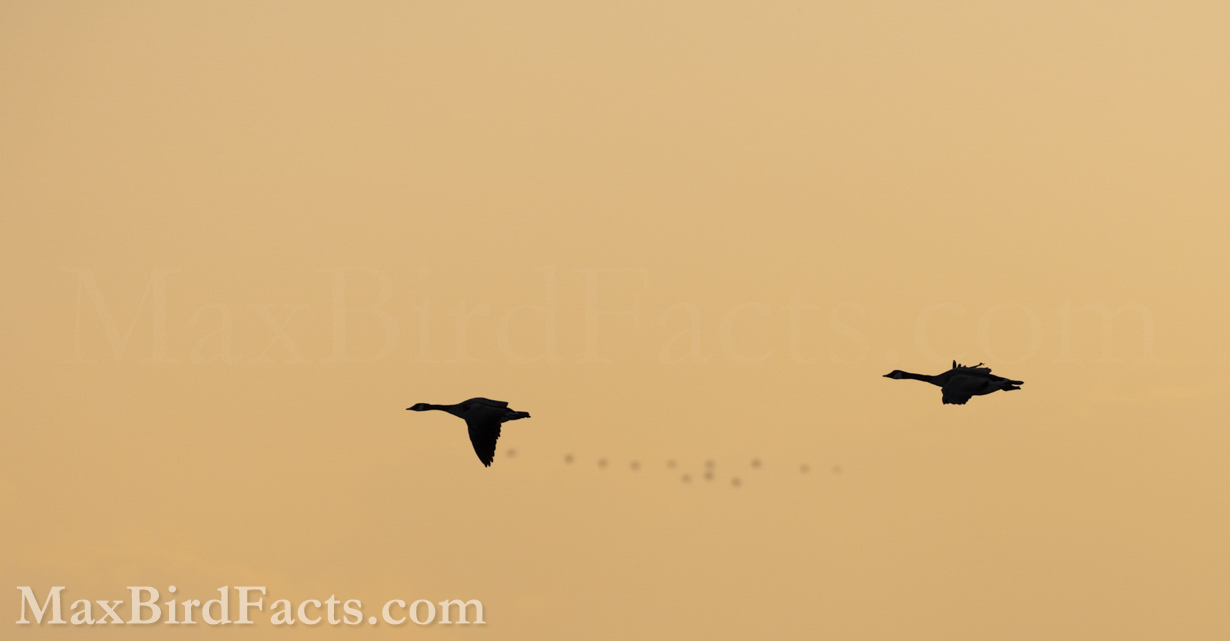
Now We Know Some Facts About The Canada Goose!
Hopefully, you learned something new from these 12 Fascinating Facts About The Canada Goose!
Even though these birds are common today, I think it is vital to understand and appreciate even the most common species to protect the more vulnerable ones.
If you have a favorite fact or one I missed that you think should be included, please put it in the comments below or email me!
If you have ideas or suggestions for topics you would like me to write about in the future, feel free to leave a comment below or shoot me an email! If you enjoyed this article and want to stay up to date when the next one is posted, sign up for my email list!
Get Outside & Happy Birding
Max
